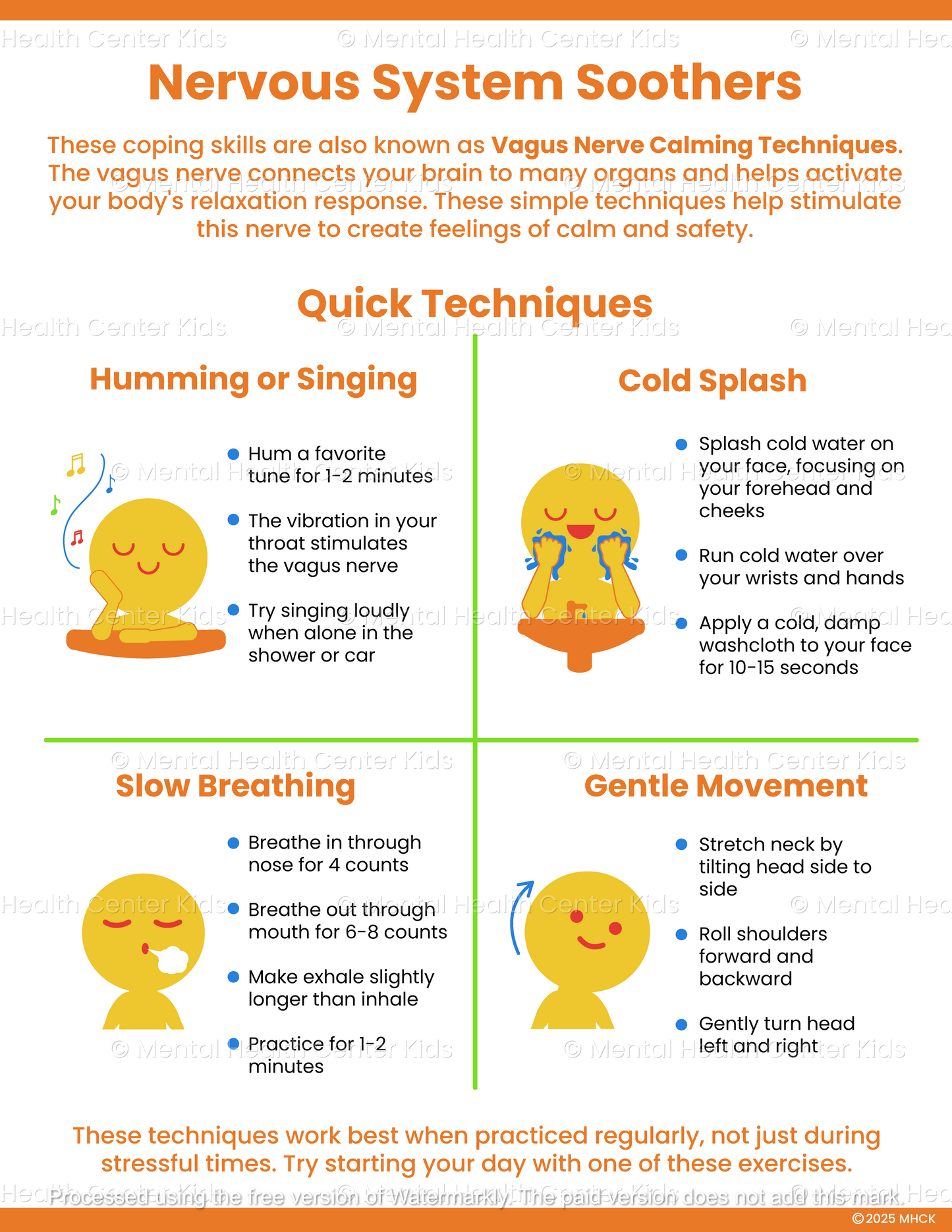Vagus Nerve Calming Techniques (PDF)



When stress takes over, the body feels it first—tight muscles, a racing heart, or a sense of being stuck in high alert. These are signals coming from the nervous system asking for a reset. The vagus nerve plays a key role in this process, helping the body move from “fight-or-flight” back to calm. Learning simple ways to engage the vagus nerve can turn an overwhelming moment into one that feels steady and safe again.
The Vagus Nerve Calming Techniques or Nervous System Soothers handout introduces calming tools that are quick, easy, and backed by science. It features four helpful sections that guide clients through calming techniques: humming or singing, a splash of cold water, slow breathing, and gentle movement. Each technique includes step-by-step instructions.
Practicing these techniques helps kids and teens learn how to regulate their nervous system before emotions become too overwhelming. They can keep this handout nearby and choose one technique during transitions, before bedtime, or when they notice tension building.
Trusted adults can support this learning by weaving calming strategies into daily routines, like humming a tune before a test or having a cold splash during a midday reset. Turning these into a short soothing sequence or building a calming jar with pictures of each step can also make the technique easier to follow.
*This item is an instant digital download. A link to download your files will be emailed to you once payment is confirmed.
Want more resources like this? Check out our full catalog of coping skills worksheets and handouts.
References:
- Breit, S., Kupferberg, A., Rogler, G., & Hasler, G. (2018). Vagus nerve as modulator of the brain–gut Axis in psychiatric and inflammatory disorders. Frontiers in Psychiatry, 9. https://doi.org/10.3389/fpsyt.2018.00044
- Helm, A. S., & Ramezani, M. (2021). The effect of music and vagus nerve to improve various diseases. Pakistan Journal of Medical and Health Sciences, 15(6), 1854-1857. https://doi.org/10.53350/pjmhs211561854
- Loizzo, J. (2017). Embodied practice, the smart vagus, and Mind‒Brain‒Body integration. Advances in Contemplative Psychotherapy, 185-203. https://doi.org/10.4324/9781315630045-17
- Prescott, S. L., & Liberles, S. D. (2022). Internal senses of the vagus nerve. Neuron, 110(4), 579-599. https://doi.org/10.1016/j.neuron.2021.12.020
- Instant digital download
- File: PDF
- Size: 8.5" x 11"




